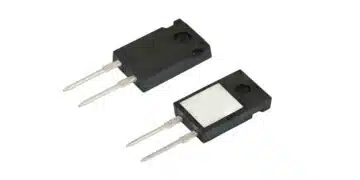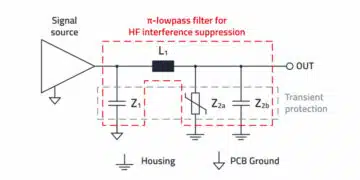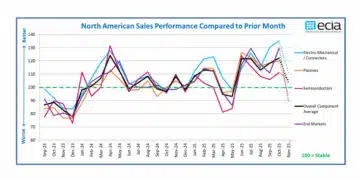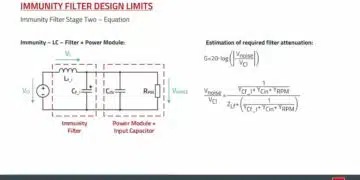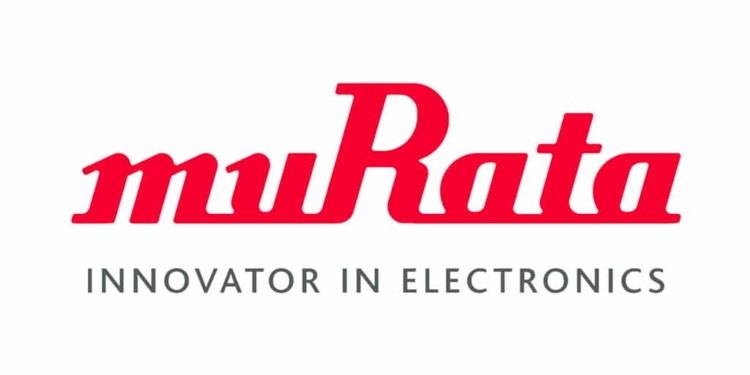Source: Electronic Products article By Gina Roos, editor-in-chief
Ceramic capacitor manufacturers including AVX, KEMET, Taiyo Yuden and TDK are all quoting extended lead times and managing product allocation.
The first rumblings of a components shortage were heard in late 2016. Scarcity became a sobering reality in 2017 as rising demand spread across industry sectors. But many component manufacturers questioned whether the uptick in demand was real, leading to their reluctance to ramp up production capacity. Component manufacturers weren’t ready to invest in factories, fearing a repeat of the 2000 industry downturn marked by ballooning inventories and rock-bottom pricing. This contributed to further supply constraints.
What’s made the situation worse is that many suppliers have decided to obsolete many of their parts at the same time, widening the supply gap. Distributors report that many Japanese passive component manufacturers are dropping their legacy commodity lines and shifting production over to newer products, creating further sourcing challenges.
Currently, many MLCCs and resistors are on allocation or are quoting lead-times well into 2019. But the supply shortages are spread across capacitor technologies including aluminum electrolytics, film, and tantalum, as well as inductors and all types of resistors.
Industry players don’t expect to see much relief until mid-2019 and some think shortages will last well into 2020. As part of AspenCore’s look at the current state of IP&E component shortages, EPSNews has polled leading passives suppliers AVX, KEMET, Murata, and Vishay to find how they are meeting supply challenges and helping their customers stay up-and-running.
Ceramic capacitor manufacturers including AVX, KEMET, Taiyo Yuden and TDK are all quoting extended lead times and managing product allocation. Murata Manufacturing, a leader in ceramic capacitors, is no exception. Murata is reporting constrained supply for smaller 0201 and 0402 case sizes; as well as some larger sizes for both low and high capacitance/voltage (CV) values.
Electronics distributors, which work with many suppliers, are quoting lead times between 20 weeks to 50 weeks, depending on the manufacturer and characteristics of the ceramic parts, said Sean Sisson, vice president, North America, for Rutronik Electronics. “Larger case sizes are more difficult to get and are at the higher lead-time range. But they are all difficult to get.”
Murata and AVX lead times are running at 52 weeks or longer, said Sisson. “Make no mistake about it, we’re in allocation.”
Some manufacturers are investing in new plants, but the challenge is that it takes time to get those plants up and running, said Sisson.
Like suppliers, distributors are trying to help end customers. Sisson recommends customers expand their approved vendors list (AVL). OEMs can survive these shortages by having the flexibility to move from one manufacturer to another on their AVL, he said.
Even stringent medical and automotive OEMs “are changing without blinking because they know it will shut down their production lines. There is a lot more flexibility with those verticals than I’ve ever seen,” Sisson added.
Three Tips to Ensure Supply
- Expand you AVL
- Consider a part with a different CV value such as a lower/higher capacitance or voltage
- Evaluate different technologies such as tantalum or aluminum electrolytics
“As long as our customers are giving us the ability to move from one supplier to another we’ve been pretty successful in fulfilling our customer requirements,” Sisson said. “It’s all about inventory and our inventory is very strong so we have the ability to help as long as they provide us with some flexibility with their AVL.”
Source: Data compilation & analysis by Stifel
All major manufacturers of multilayer ceramic chip capacitors (MLCCs) are increasing production capacity. In addition to alleviating the current shortage, manufacturers see tremendous demand projected for MLCCs. The number of these devices per application — ranging from smart phones to vehicles — are increasing, and there’s a rise of new applications related to 5G, the internet of things (IoT), and the electrification of vehicles.
Fearing a sudden oversupply, capacitor manufacturers are “cautiously” adding production capacity. But many industry players don’t believe it’s enough. Shortages will likely play out until 2020.
More parts move to EOL or NRND
Adding to an already-squeezed supply chain, Murata reportedly is placing many products on end-of-life (EOL) or not recommended for new designs (NRND). Murata declined to comment on the matter. However, distribution lead-time trends indicate that Murata is quoting long lead times for MLCCs and has issued EOL notifications for many parts.
Future Electronics, in its Q2 market conditions report, said lead times for Murata’s surface-mount ceramic capacitors range between 20 to 38+ weeks and continue to increase. Murata has issued EOL notifications for many of these parts, Future added.
Future also reported lead times of 18 to 20 weeks for Murata’s leaded ceramic capacitors, although many of the company’s leaded parts are EOL. Future also noted a “controlled order entry on a long list of parts, mostly for large parts.”
TTI Inc. also lists several of Murata’s parts as constrained. These include Murata’s GR and ZR series of ceramic capacitors for select values in 0402, 0603, 0805 and 1206 and larger case sizes across dielectrics, including R, X5R, X7R, X7S and X6S. Capacitance values are typically ≥1 µF with voltages less than 100 V. In addition, several of Murata’s commercial and automotive ceramic capacitors are in constrained supply including the GC, GRM and ZR series for select values in case sizes from 0201 to 1825. Low and high CV values in all dielectrics are effected.
Constrained Murata Parts
GR* and ZR* Series Monolithic Ceramic Capacitors:
Select values in 0402, 0603, 0805 and 1206 and up case sizes
R, X5R, X7R, X7S and X6S dielectrics
Capacitance values ≥1uF and voltage less than 100V
Commercial and Automotive ceramic capacitors
GC*, GRM and ZR series
Select values in 0201 – 1825 case sizes
Low CV and High CV all dielectrics
Source: TTI Inc., July 2018
Fusion Worldwide reported in August that “Murata is at the forefront of the manufacturers impacted” by the dramatic increase in global demand for MLCCs, particularly in the telecommunications and automotive markets. Fusion reported lead times of 12 to 36 weeks for Murata’s standard MLCCs, and 24 to 52 weeks for Murata’s automotive series capacitors, including GCM31/GCM21/GCM188/GCJ31/GCJ32.
“Bigger case sizes, such as 1210/1206/1812 for 105/106/107/226 capacitance values are facing critical shortages,” said Fusion. “On top of that, Murata officially announced a number of part numbers updated with status ‘Not Recommended for New Design’ (NRND), as well as cost increases in line with market demand. The NRND parts are mainly case sizes above 0603, capacitance below 104 (0.1 µF) and voltage within 100 V.”
Murata is expected to stop producing consumer MLCCs in 2020 to focus on automotive products, according to Fusion. The supplier plans to expand production capacity at plants in Japan, Wuxi and the Philippines. But it could take two to three years before it reaches full capability, said Fusion, so no short-term relief is expected.
In June 2018, Fukui Murata Manufacturing Co., Ltd., a manufacturing subsidiary of Murata Manufacturing Co., Ltd. acquired a new site in Japan to expand MLCC production capacity. Construction is expected to start in September 2018 and be completed by the end of December 2019.
Sisson expects component shortages will continue into 2020 and beyond, due to new technologies using more MLCCs. “It’s not going to get better any time soon. The end of 2020 is a conservative estimate,” he concluded.



